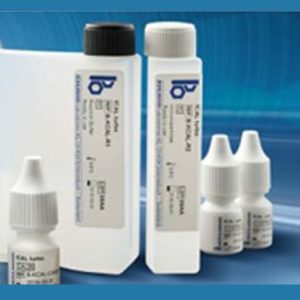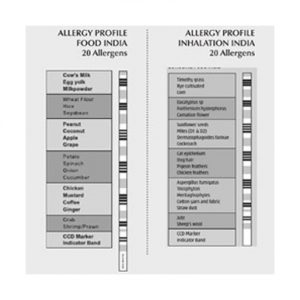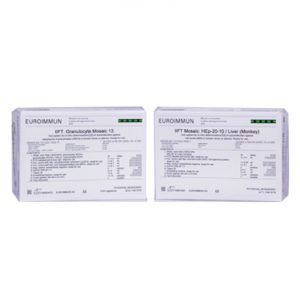BRAHMS BIOMARKERS
KEY FACTS
- Early diagnosis of systemic bacterial and fungal infections and sepsis.
- Assessment of severity and prognosis of systemic infection, sepsis and multiple organ failure.
- Differential diagnosis of systemic infection vs. acute inflammatory disease.
- Differential diagnosis of bacterial vs. viral infection. Infectious disease monitoring of high-risk patients i.e. after organ transplantation, immunosuppression or multiple trauma.
- Therapeutic monitoring after surgical elimination of infected focus and after administration of antibiotics.
Request a Quote
Brahms Biomakers diagonosis kit
KEY FACTS
- Early diagnosis of systemic bacterial and fungal infections and sepsis.
- Assessment of severity and prognosis of systemic infection, sepsis and multiple organ failure.
- Differential diagnosis of systemic infection vs. acute inflammatory disease.
- Differential diagnosis of bacterial vs. viral infection. Infectious disease monitoring of high-risk patients i.e. after organ transplantation, immunosuppression or multiple trauma.
- Therapeutic monitoring after surgical elimination of infected focus and after administration of antibiotics.
Nearly 1000 research papers have been published supporting the utility of Procalcitonin as an early diagnostic marker and a prognostic marker for detecting and monitoring bacterial sepsis.
INTERNAL MEDICINE
In acute pancreatitis for the differential diagnosis of the infected vs. sterile necrosis.
For the identification of infectious etiologies in fever of unknown origin (FUO).
In ARDS for the differentiation between infectious vs. non-infectious etiology.
SURGERY AND IN ICU
In the postoperative period as an early indicator of bacterial and septic infectious complications.
For the management of successful therapy after surgical elimination of infectious foci (peritonitis).
For the rapid diagnosis and monitoring patients at the risk of sepsis.
TRANSPLANTATION MEDICINE
Differentiation between an acute organ rejection and viral infection vs. bacterial infection.
As a general monitoring parameter for bacterial infections and to rule out systemic bacterial infection (Sepsis).
Before transplantation to rule out acute bacterial infections.
PEDIATRICS
To aid the differential diagnosis of acute meningitis by differentiating between bacterial and viral etiologies.
In acute fever of neonates and infants for the diagnosis of systemic bacterial infection and the onset of sepsis vs. nonseptic diseases.
HAEMATOLOGY AND ONCOLOGY:
Monitoring of immunosuppressed patients and neutropenic patients following chemotherapy.
Differential diagnosis of fever induced by tumors lysis or chemotherapy in oncology patient’s vs. infection induced etiologies.
Differentiation between viral and bacterial infections.
NORMAL RANGE FOR PCT
Less than 0.5 ng/ml (age specific in neonates between 0 – 72 hours from the time of birth).More than 300 plus referral hospitals in India are using Procalcitonin to detect Sepsis and as a prognostic marker for monitoring sepsis.Procalcitonin is available exclusively from Brahms through CPC in the following formats.
- BRAHMS PCT Q (a Semi quantitative Immunochromatographic assay).
- BRAHMS PCT LIA (a quantitative Immunoluminometric assay).
- BRAHMS Kryptor PCT (Quantitative assay on Kryptor Compact).
KRYPTOR REAGENTS
The following are the assays which can be performed with ease on Kryptor compact:
- Prenatal Screening Markers.
- Tumour Markers.
- Sepsis Markers.
- Fertility Markers
- Bone Metabolism Markers
PRENATAL SCREENING
Trisomy 21 or Down’s Syndrome is one of the most common genetic abnormalities affecting 1 in every 700 births worldwide. The risks of chromosomal defects like Trisomy 21 increases with maternal age, but decreases with gestational age, since foetuses with chromosomal defects are more likely to die in-utero than unaffected foetuses. But the majority of babies with Down’s Syndrome are born to healthy young parents without any known risk.
Invasive testing for chromosomal abnormalities is associated with a certain risk of miscarriage of about 1%. Non-invasive testing – with a combination of biochemical markers and nuchal translucency measurement in the 1st trimester of pregnancy or with biochemical markers alone in the 2nd trimester of pregnancy – allows the group of mothers under the age of 35 years – usually considered to be at low risk – to assess their individual risk without having to submit to invasive testing.
A responsible risk assessment requires high precision and accuracy in the measurement of the biochemical markers, as well as for the measurement of the Nuchal Translucency (NT). For the biochemical markers, KRYPTOR fulfils these requirements in an exceptional way, making KRYPTOR the instrument of choice for 1st and 2nd trimester screening.
FIRST TRIMESTER SCREENING
- Kryptor PAPP-A
- Kryptor free β hCG
SECOND TRIMESTER SCREENING
- Kryptor AFP
- Kryptor free β hCG





